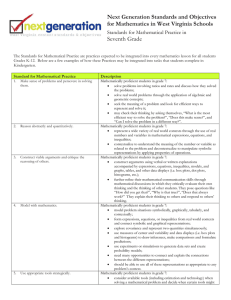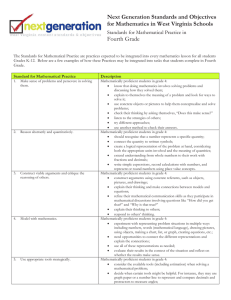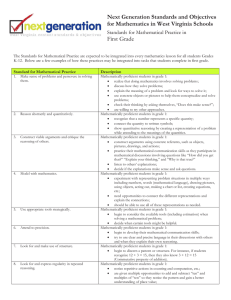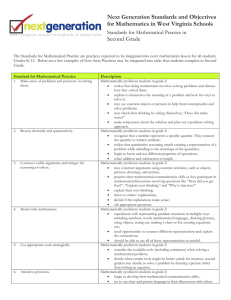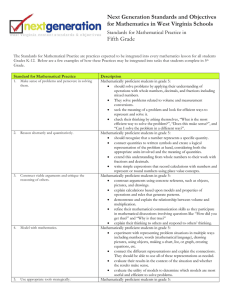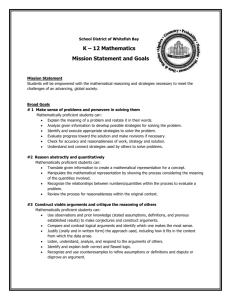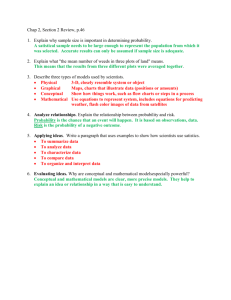Next Generation Standards and Objectives for Mathematics in West Virginia Schools
advertisement
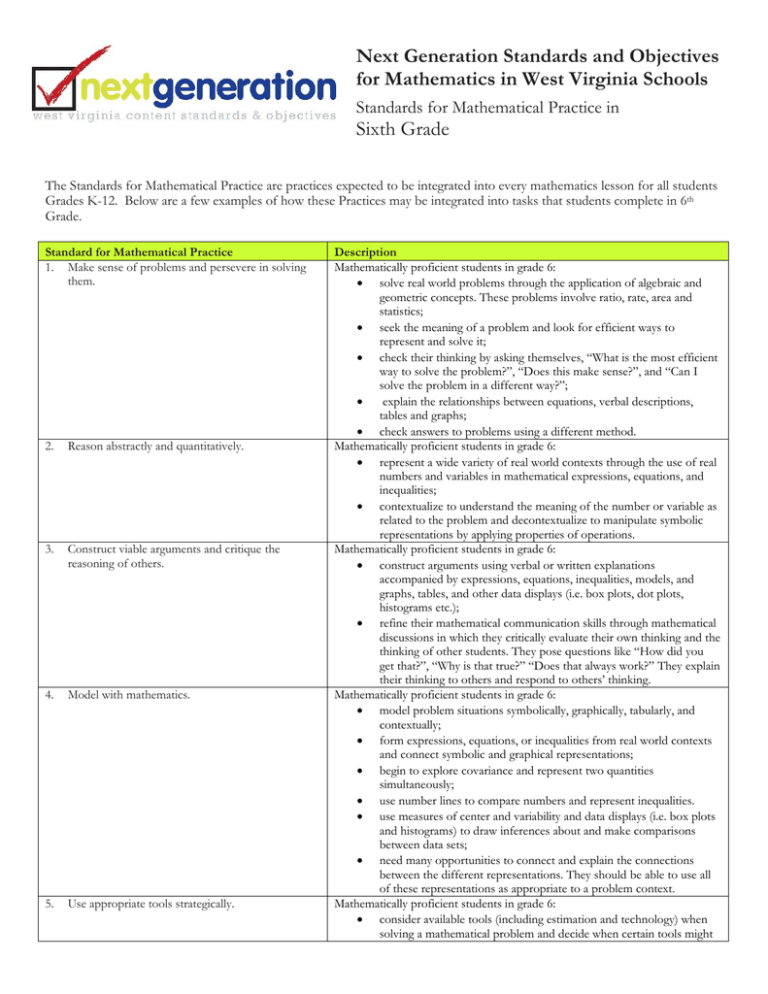
Next Generation Standards and Objectives for Mathematics in West Virginia Schools Standards for Mathematical Practice in Sixth Grade The Standards for Mathematical Practice are practices expected to be integrated into every mathematics lesson for all students Grades K-12. Below are a few examples of how these Practices may be integrated into tasks that students complete in 6th Grade. Standard for Mathematical Practice 1. Make sense of problems and persevere in solving them. 2. Reason abstractly and quantitatively. 3. Construct viable arguments and critique the reasoning of others. 4. Model with mathematics. 5. Use appropriate tools strategically. Description Mathematically proficient students in grade 6: solve real world problems through the application of algebraic and geometric concepts. These problems involve ratio, rate, area and statistics; seek the meaning of a problem and look for efficient ways to represent and solve it; check their thinking by asking themselves, “What is the most efficient way to solve the problem?”, “Does this make sense?”, and “Can I solve the problem in a different way?”; explain the relationships between equations, verbal descriptions, tables and graphs; check answers to problems using a different method. Mathematically proficient students in grade 6: represent a wide variety of real world contexts through the use of real numbers and variables in mathematical expressions, equations, and inequalities; contextualize to understand the meaning of the number or variable as related to the problem and decontextualize to manipulate symbolic representations by applying properties of operations. Mathematically proficient students in grade 6: construct arguments using verbal or written explanations accompanied by expressions, equations, inequalities, models, and graphs, tables, and other data displays (i.e. box plots, dot plots, histograms etc.); refine their mathematical communication skills through mathematical discussions in which they critically evaluate their own thinking and the thinking of other students. They pose questions like “How did you get that?”, “Why is that true?” “Does that always work?” They explain their thinking to others and respond to others’ thinking. Mathematically proficient students in grade 6: model problem situations symbolically, graphically, tabularly, and contextually; form expressions, equations, or inequalities from real world contexts and connect symbolic and graphical representations; begin to explore covariance and represent two quantities simultaneously; use number lines to compare numbers and represent inequalities. use measures of center and variability and data displays (i.e. box plots and histograms) to draw inferences about and make comparisons between data sets; need many opportunities to connect and explain the connections between the different representations. They should be able to use all of these representations as appropriate to a problem context. Mathematically proficient students in grade 6: consider available tools (including estimation and technology) when solving a mathematical problem and decide when certain tools might 6. Attend to precision. 7. Look for and make use of structure. 8. Look for and express regularity in repeated reasoning. be helpful. For instance, students in grade 6 may decide to represent figures on the coordinate plane to calculate area; Use number lines to understand division and to create dot plots, histograms and box plots to visually compare the center and variability of the data; might use physical objects or applets to construct nets and calculate the surface area of three-dimensional figures. Mathematically proficient students in grade 6: continue to refine their mathematical communication skills by using clear and precise language in their discussions with others and in their own reasoning. Students use appropriate terminology when referring to rates, ratios, geometric figures, data displays, and components of expressions, equations or inequalities. Mathematically proficient students in grade 6: routinely seek patterns or structures to model and solve problems. For instance, students recognize patterns that exist in ratio tables recognizing both the additive and multiplicative properties; apply properties to generate equivalent expressions (i.e. 6 + 2x = 3 (2 + x) by distributive property) and solve equations (i.e. 2c + 3 = 15, 2c = 12 by subtraction property of equality, c=6 by division property of equality); compose and decompose two- and three-dimensional figures to solve real world problems involving area and volume. Mathematically proficient students in grade 6: use repeated reasoning to understand algorithms and make generalizations about patterns; during multiple opportunities to solve and model problems, they may notice that a/b ÷ c/d = ad/bc and construct other examples and models that confirm their generalization; connect place value and their prior work with operations to understand algorithms to fluently divide multi-digit numbers and perform all operations with multi-digit decimals; informally begin to make connections between covariance, rates, and representations showing the relationships between quantities.
